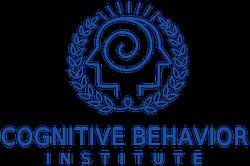Anxiety in life is healthy. It is the body’s natural physiological response to stimuli that are perceived as dangerous. Also known as the fight or flight response to threats, it is the human survival technique. To experience anxiety is to consciously recognize that the self is in threat of imminent harm – be it physical or psychological.
A panic attack occurs when a person is stimulated by anxiety in inappropriate instances when there is no actual threat of imminent harm. Typically, the occurrence is seemingly random, sparked by nothing in particular. A person can experience a panic attack at any time in any context, for example: when out shopping, driving a car, being at work or even sitting on the couch.
A person knows they are experiencing a panic attack by the presence of particular clusters of symptoms. Almost always, someone suffering a panic attack can experience a combination of shortness of breath, chest pain or tightness, sweating, racing heart, light headedness or dizziness, shaking, hot or cold flashes, nausea and even fear of dying, going crazy or losing control. The experience can feel so intense that panic attacks have been mistaken for heart attacks. Although, typically the intensity of a panic attack peaks after about ten minutes.
Panic disorder is diagnosed when an individual suffers from recurrent panic attacks. When a person is having many panic attacks, he or she may make adverse lifestyle changes in an attempt to slow the frequency. Those with panic disorder have a debilitating fear of when and where the next panic attack could occur. It is highly likely that this could cause them to avoid places where panic attacks have been experienced (the car, an elevator, the airport, etc.). Agoraphobia, or the fear of public places and situations that may induce panic, is often diagnosed in conjunction with panic disorder. There is no cure for both disorders; however, clinical research indicates that cognitive behavioral therapy (CBT) can provide most effective treatment as well as a new computer tables based visual intervention.
A cognitive behavioral therapist uses a combination of talk therapy and exposure techniques to help those suffering from panic disorder normalize situations and contexts that are associated as triggers of panic attacks. This conscious normalization informs clients that having a panic attack in particular contexts is irrational, and therefore unnecessary. Teaching breathing techniques that help adjust breathing in more normal, calming ways are also used in CBT treatment.
In fact, clinical research shows that people with panic disorder consistently breathe abnormally. Evidence shows that these individuals take in too much oxygen and exhale too little carbon dioxide, which leaves them at risk for panic attacks. Addressing breathing patterns that normalize CO2 levels can improve panic symptoms and even eliminate them over time.
Freespira is an at-home electronic viewing therapy for individuals with panic disorders that address breathing patterns in a way that over times teaches individual’s how to breathe in a manner that decreases panic symptoms or eliminates them altogether. A therapist will first show you have to use Freespira in office. Freespira is a device and app that takes a person through 17 minute guided and measured sessions twice a day on how to breathe more normally. A sensor is used to record respiratory CO2 output and feedback is instantaneously recorded and analyzed, making each session custom to the user. After a 4 week, twice daily, regimen, almost 70% of Freespira users reported they no longer suffer from panic attacks. The effects are long lasting.
The Cognitive Behavior Institute has a certified cognitive therapist specializing in the treatment of Panic Disorders. For help contact us at the Cognitive Behavior Institute or call 724-609-5002 to get help.
By Spencer Kilpatrick
Master Of Social Work, Intern
University Of Pittsburgh

